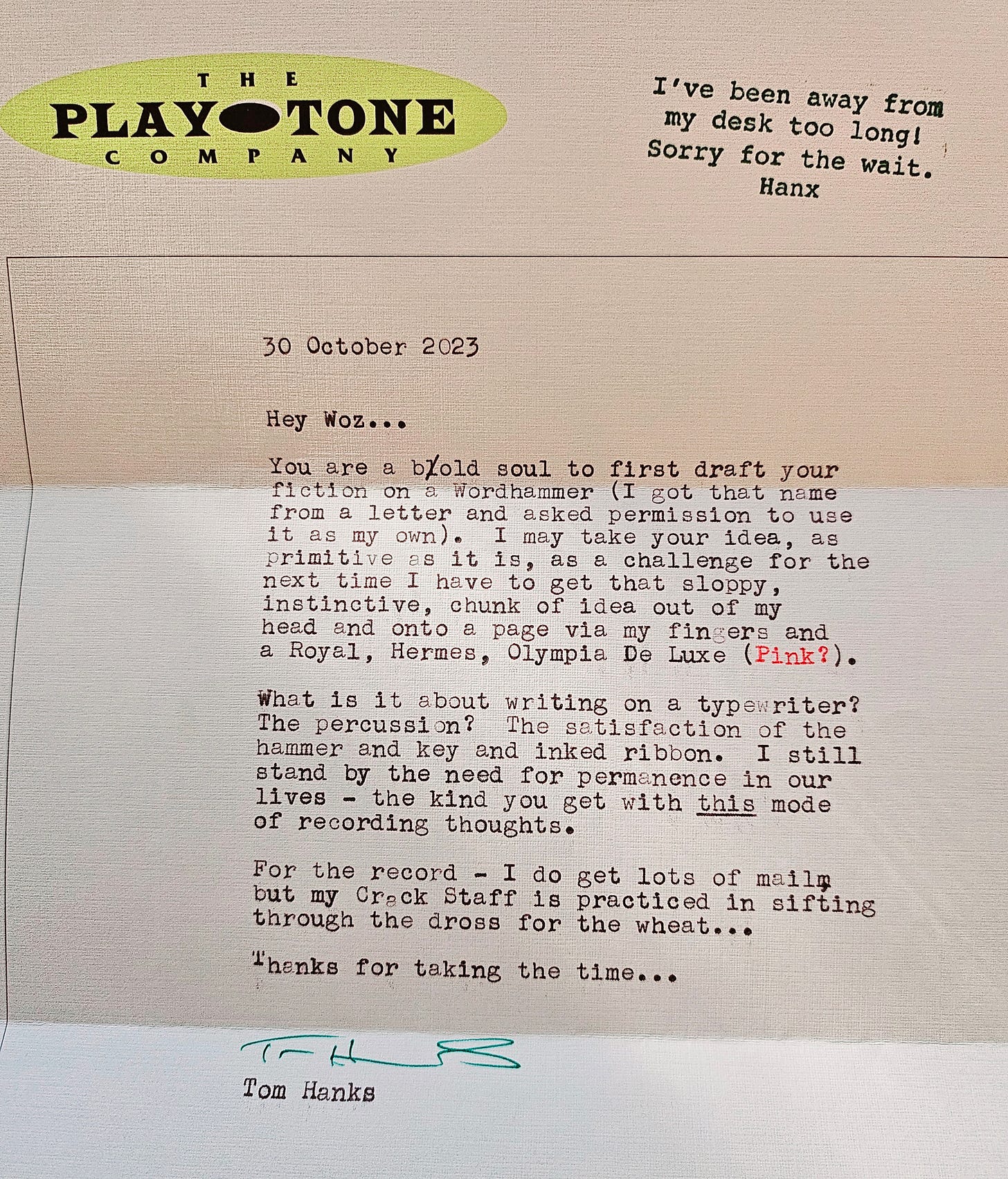It’s true that I have a collection of typewriters. And it’s also true that I use them to, you know, actually write.
I realize this isn’t everyone’s cup of tea. This is made evident from some of the reactions I get from people when they learn I write this way.
Folks can be dismissive, condescending, and even downright defensive about how they choose to write, and then try to convince me that my method is “just plain impractical” and archaic.
Good news, though! There is an entire other camp of people who are curious, interested, and excited to share a connection. They enjoy telling me about family members they remember used typewriters or love asking why I find the typewriter a fantastic tool for first drafts.
The second group? Those are my people.
I could go on and on (and I have!) about why I love writing with typewriters, but that’s not what I’m here to do today.
Today, I want to tell you about a few contemporary writers who type*.
Danielle Steel
Steel is an author who, as of 2022, has written nearly 200 books. Of those, 150 of them are novels. She’s earned the title of the best-selling living fiction writer of all time, selling more than 900 million copies globally.
And she’s written more than half of her books on a 1960s Olympia.
In a blog post on Steel’s website, she wrote, “I paid $20.00 for it a million years ago, at the beginning of my career, in a second-hand typewriter store. And I love it. I can’t write on anything else, and wouldn’t try. And I can’t write on a computer. It just doesn’t work for me (except for email). The thought that a computer would EAT 3 chapters of a book, or all of it, is horrifying to me. So I’m definitely sticking to my ancient typewriter, still going strong (best investment I ever made, 116 books later), which very politely only eats what I feed it. It is an incredibly fine machine.”
Sandra Cisneros
Best known for her first novel, The House on Mango Street, Chicago-born poet, short story writer, essayist, and artist Cisneros has had an affinity for the typewriter for many, many years.
In the introduction to A House of My Own: Stories from My Life, she wrote, “A long time ago, which was yesterday, I could tell time by the typeface of my manuscripts. I mean yesterday BC—Before Computers. I roamed the earth and borrowed typewriters in Greece, France, the former Yugoslavia, Mexico, and throughout the United States. My manuscripts were sheaves of paper with holes from where the placket struck the page too fiercely. And everywhere I went, the poems or stories or essays I typed, with their mismatched typefaces and consistent typing errors, reminded me, like passport stamps, where I’d been.”
Tayari Jones
As a New York Times best-selling author and creative writing professor, Jones writes all her novels on vintage manual typewriters.
After the release of An American Marriage, which appeared on Barack Obama’s summer reading list, won the Women’s Prize for Fiction and an NAACP Image Award, she told The Seattle Times why the typewriter is her go-to machine: “It’s like when you eat too fast and the plate is empty, so you clearly ate it, but you don’t really remember eating it. That’s how I feel when I compose on a computer—it’s too fast.”
And, like many who fall in love with typewriters, she welcomes the entire experience. “The typewriter slows me down,” she said. “And I do feel very satisfied making all that noise, I feel like I’m getting something done.”
Tom Hanks
Hanks is an actor, filmmaker, and an American cultural icon. In 2017, he added author to his credentials when Uncommon Type, a collection of 17 short stories (all of which Hanks sneaks a typewriter into), was published.
Quite the typewriter enthusiast, he regularly uses them as part of his everyday routine. In an interview with Far Out Magazine, Hanks said, “Everything you type on a typewriter sounds grand, the words forming mini-explosions. A thank-you note resonates with the same heft as a literary masterpiece.”
Also enthusiastically explaining the sensory delights that folks in the typosphere know quite well, he added, “There is the sheer physical pleasure of typing. It feels as good as it sounds, the muscles in your hands control the volume and cadence of the aural assault so that the room echoes with the staccato beat of your synapses.”
So, as you can see, you don’t have to take my word for it—typewriters are still alive and well.
They can be used for all sorts of writing. And who knows? If you send a snailie to a writer who types, they may just send one back to you.
*An excerpt from The Distraction-Free First Draft (One Idea Press, 2023)




The Hanks' letter, what a treasure!
Everything on the typewriter does sound grand! Thank you for sharing this perspective on writing. I may need to give it a try.